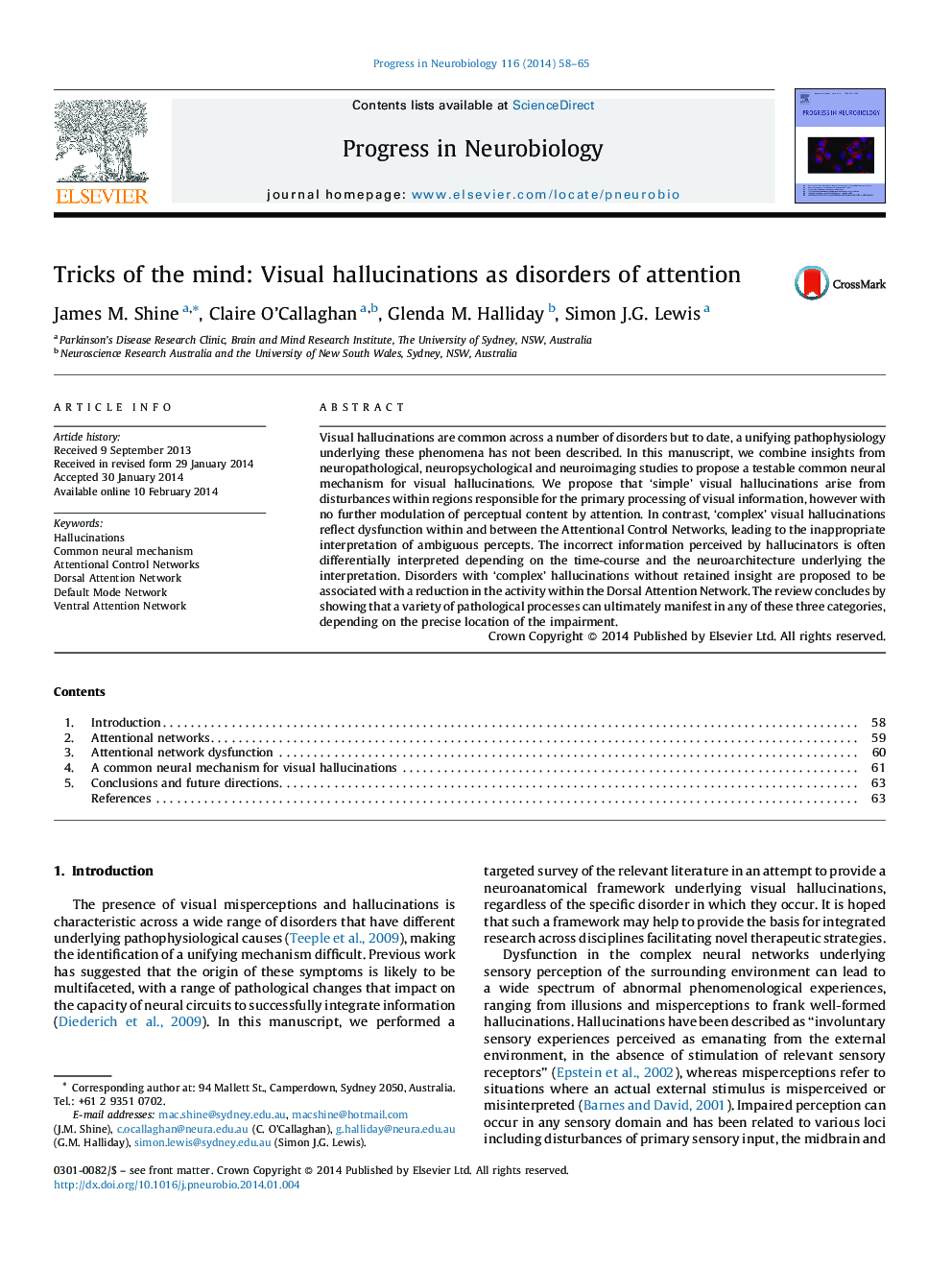| Article ID | Journal | Published Year | Pages | File Type |
|---|---|---|---|---|
| 4353347 | Progress in Neurobiology | 2014 | 8 Pages |
•Hallucinations occur in many brain diseases, however there is no unifying mechanism.•Complex behaviour arises from activity among connected neuronal networks.•We propose that hallucinations are due to disorders of attentional network activity.•All diseases with hallucinations can be re-framed as disorders of network activity.
Visual hallucinations are common across a number of disorders but to date, a unifying pathophysiology underlying these phenomena has not been described. In this manuscript, we combine insights from neuropathological, neuropsychological and neuroimaging studies to propose a testable common neural mechanism for visual hallucinations. We propose that ‘simple’ visual hallucinations arise from disturbances within regions responsible for the primary processing of visual information, however with no further modulation of perceptual content by attention. In contrast, ‘complex’ visual hallucinations reflect dysfunction within and between the Attentional Control Networks, leading to the inappropriate interpretation of ambiguous percepts. The incorrect information perceived by hallucinators is often differentially interpreted depending on the time-course and the neuroarchitecture underlying the interpretation. Disorders with ‘complex’ hallucinations without retained insight are proposed to be associated with a reduction in the activity within the Dorsal Attention Network. The review concludes by showing that a variety of pathological processes can ultimately manifest in any of these three categories, depending on the precise location of the impairment.
